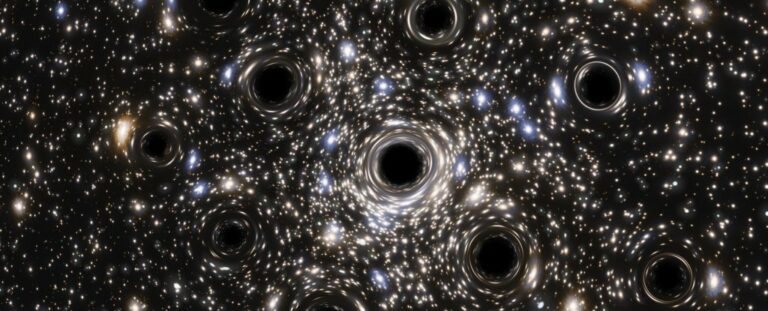Swarm of Black Holes Discovered Moving Through The Milky Way
A diffuse cluster of stars, Palomar 5, may be hiding a remarkable secret at its core: more than a hundred stellar-mass black holes in a swarm.
Palomar 5; this is a stellar stream, a long narrow train of stars, at a distance of some 80000 light years from us, and stretching for some 30000 light years across. It is a ‘fossil’ of the early Universe and many of them can contain hundreds thousands and sometimes millions of ancient stars. Our galaxy is home to approximately 150 of such globular clusters that are useful in understanding the past of the Universe as well as the dark matter in neighbouring galaxies.
Other formations, such as districts and regions, are much less familiar; recently however tidal streams, or the rivers of stars that stretch across the night sky, are rather popular. Some of these streams were difficult to discover until the Gaia space observatory started surveying Milky Way in 3D with a high degree of accuracy, finding many more.
‘We still do not know how these streams are shaped but one idea proposed is that they are formed from disrupted star clusters explains Mark Gieles, an astrophysicist from the University of Barcelona. Palomar 5 is important since it is a tidal stream and a globular cluster and as such is very significant for examining such tidal streams that are formed in space.
To match the observed phase space distribution of the stars as well as mimic the nature of the orbits and development of Palomar 5, Gieles and his team used N-body simulations, with an assumption that the stellar-mass black holes therein at the core might be interfering with the form of the cluster. These black holes may have influenced stars in the cluster to be ejected towards the tidal stream and the black holes themselves were left behind.
From their researches, they concluded that Palomar 5 has many more black holes than was antecedently envisaged—indeed three multiplication as many. Black holes are consists more than 20% of the total mass of the cluster having the mass of nearly around 20 times of that of Sun. In fact, these black holes were originally associated with supernovae of massive stars in the early epoch of the cluster formation.
Simulations show that Palomar 5 will completely dissolve in about a billion years and an array of black holes will remain orbiting the centre of the Milky Way, if at all there will still exist. This implies that other globular clusters may also be experiencing the same fate and in the process indicate more stellar streams as well as black holes that may coalesce in the future.
Astrophysicist Fabio Antonini from Cardiff University adding : ‘This research gives a clue with reference to number of black holes in star clusters this is a tough job because black holes cannot be seen’. It is basically about ‘counting’ the number of black holes present in them by ‘watching’ stars they ‘spit out’.
The research has been published in Nature Astronomy.
Do not forget to share your opinion with us to provide you with the best posts !




0 Comments